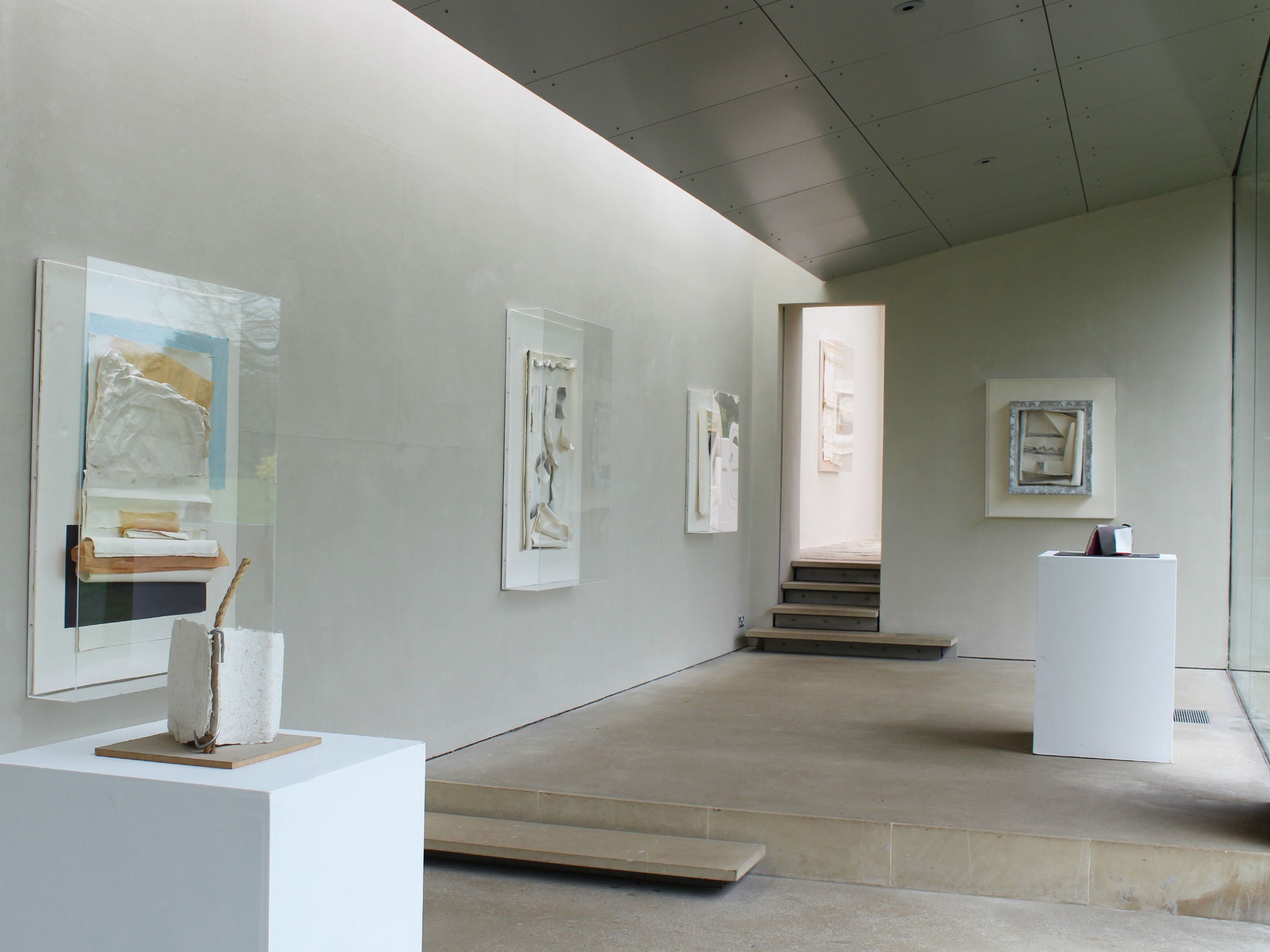Anthony Caro: Paper Like Steel, New Art Centre, Salisbury, review
The late sculptor Anthony Caro’s 30 small-scale works made out of paper display an unusual delicacy from the artist known for his large abstract sculptures in metal

Your support helps us to tell the story
From reproductive rights to climate change to Big Tech, The Independent is on the ground when the story is developing. Whether it's investigating the financials of Elon Musk's pro-Trump PAC or producing our latest documentary, 'The A Word', which shines a light on the American women fighting for reproductive rights, we know how important it is to parse out the facts from the messaging.
At such a critical moment in US history, we need reporters on the ground. Your donation allows us to keep sending journalists to speak to both sides of the story.
The Independent is trusted by Americans across the entire political spectrum. And unlike many other quality news outlets, we choose not to lock Americans out of our reporting and analysis with paywalls. We believe quality journalism should be available to everyone, paid for by those who can afford it.
Your support makes all the difference.Who in his right mind would readily associate the idea of Anthony Caro with the yielding fragilities of paper? Caro as a sculptor was a man wedded, life-long, to metal, and his sculptures often seem to epitomise a kind of brute, legs-braced, unyielding monumentality. And yet there was a period in his life when paper presented him with unforeseen creative opportunities.
It was during a visit to Japan in 1990. He was introduced to a papermaker, and he began to make works out of Washi paper, a material which had been made for generations by the same family in the village of Obama. Washi paper is unlike other papers. It is tough, textured, and, when softened by water, it can be shaped – if not moulded – by hand. When dry, it feels as strong and brittle as ceramic. Unsurprisingly, it had once been used to make armour for archers.
The pleasure for Caro is that he was no longer at a distance from his own work, no longer dependent upon the assistance of fabricators. He could work on a small scale. What is more, his own hands could do all the making, twisting it about, bending it, crunching it up. The works themselves have an unusual delicacy, lightness, elegance and even humour – characteristics which would not readily spring to mind. Caro made a group of thirty of these works, quite quickly, and continued to experiment with paper over a period of about twenty years. This is the first time that many of them have been shown together as a group.

Some are plinth-based; some hang on the wall, framed. In part they are low-relief sculptures, and in part paintings – yes, he has added paint and charcoal to some of them. Paper Fly consists of thin, vertical segments of paper, hinged to spread like a fan – or like the fanning of wings. It looks comically tremulous, airy, as if about to lift off its steel base. Obama Secret is wall-hung, enclosed by a silver frame. Is this space into which we seem to be staring deep or shallow? The vertical folds of paper looks like planes shifting in relation to each other, a tricksy and illusory play of perspective. A third piece, Obama Scatter, looks like tumbling forms arrested in their fall – playful, inventive, shapely.
Fabricating became a delightful game, in the company of no one but himself.
Join our commenting forum
Join thought-provoking conversations, follow other Independent readers and see their replies
Comments